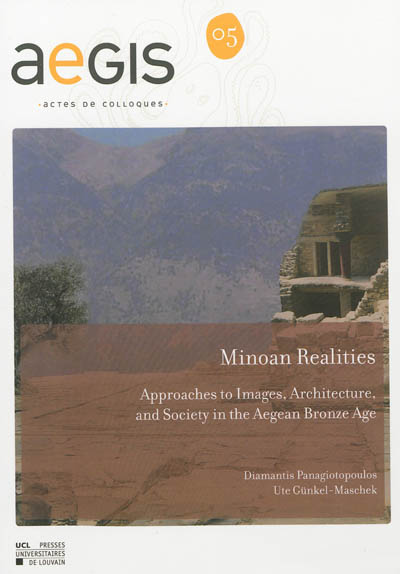en savoir plus

Permet à tous ses détenteurs d'obtenir 5% de réduction sur tous les livres lors du retrait en magasin (réduction non cumulable avec les réductions de type étudiant).
Offre également un certain nombre d'avantages auprès de nos partenaires.
Avec les favoris, retrouvez dans un espace les sélections effectuées au fur et à mesure de vos navigations dans le site.
Constituez pour votre usage personnel vos listes de livres en prévisions d'achats futurs et votre sélection d'articles, dossiers, événements, vidéos ou podcasts préférés ou à découvrir plus tard...
Il suffit simplement de cliquer sur "Ajout Favori" sur chaque page qui vous intéresse pour les retrouver ensuite dans votre espace personnel.
Requiert un compte Mollat
Requiert un compte Mollat
Minoan realities : approaches to images, architecture and society in the Aegean Bronze Age
en savoir plus
Résumé
Contributions à un colloque de 2009 sur le pouvoir des images et de l'architecture dans la société minoenne. Quel fut leur rôle dans la création d'environnements spécifiques ? ©Electre 2026
Quatrième de couverture
The content
What is the social role of images and architecture in a pre-modern society ? How were they used to create adequate environments for specific profane ahd ritual activities ? In which ways did they interact with each other ? These and other crucial issues on the social significance of imagery and built structures in Neopalatial Crete were the subject of a workshop which took place on November 16th, 2009 at the University of Heidelberg. The papers presented in the workshop are collected in the present volume. They provide different approaches to this complex topic and are aimed at a better understanding of the formation, role, and perception of images and architecture in a very dynamic social landscape. The Cretan Neopalatial period saw a rapid increase in the number of palaces and « villas », characterized by elaborate designs and idiosyncratic architectural patterns which were themselves in turn generated by a pressing desire for a distinctive social and performative environment. At the same time, a new form of imagery made its appearance in a broad spectrum of objects and spaces which were « decorated » with meaningful motifs chosen from a restricted and repetitive pictorial repertoire. This standardized repertoire indicates the configuration of a coherent pictorial program which was implemented in several social situations. The present volume is intended not only for specialists in Minoan culture but also for readers who are interested in the social dimension of images and architectural remains and especially in issues relating to their materiality, use and perception.
The authors
Diamantis Panagiotopoulos is Professor at the Institute of Classical Archaeology. University of Heidelberg. His research interests include the social structures of the Aegean civilizations, Aegean imagery, the interconnections between the Aegean and the Near East in the second millennium B.C., and ancient sealing practices. He is currently director of the interdisciplinary research program on Minoan Koumasa, Crete.
Ute Günkel-Maschek completed her doctoral thesis at the University of Heidelberg as a member of the graduate academy « Spaces, Images, Ways of Life in Ancient Civilizations ». Her research interests lie in the study of Minoan and Mycenaean imagery and visual culture as expressions and factors of social and cultural realities, and in the 3D visualization of the perception and consumption contexts of images.
The series AEGIS (Aegean Interdisciplinary Studies) attempts to make the results of new archaeological research on Aegean and especially Minoan societies available to the scientific and wider public at a rapid pace. Monographs. PhD dissertations, proceedings of scientific meetings and excavation reports complete each other to offer a general view of this time frame which is of primary importance to understand the ancient world and its historical, political, symbolical and social sequences.
Fiche Technique
Paru le : 20/03/2013
Thématique : Préhistoire
Auteur(s) : Non précisé.
Éditeur(s) :
Presses universitaires de Louvain
Collection(s) : Aegis
Contributeur(s) : Editeur scientifique (ou intellectuel) : Diamantis Panagiotopoulos - Editeur scientifique (ou intellectuel) : Ute Günkel-Maschek
Série(s) : Non précisé.
ISBN : 978-2-87558-100-6
EAN13 : 9782875581006
Reliure : Broché
Pages : 181
Hauteur: 30.0 cm / Largeur 21.0 cm
Poids: 800 g

